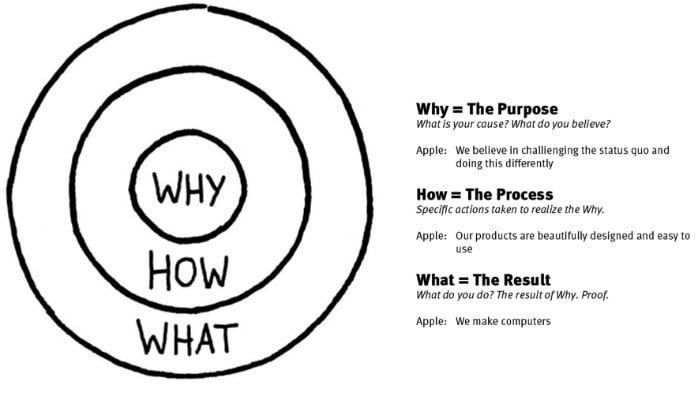Another team member resigned. The second one in the last three months… How can this be?
Many managers are puzzled by similar situations and are confronted with this question in their daily business. High turnover is one of the most critical factors that cripple companies from reaching their full potential. Experience shows that this does not happen equally in all companies and teams, but it is related to different leadership styles and cultures.
I am Andrei, one of the tech leads, at Innogames and in this article, I would like to share with you some of the strategies and tools to tackle the leadership challenges that we have today.
Leadership Styles
Imagine using a hammer to solve all household issues. If there would be a missing nail, a hammer would be a go-to tool. Now, if the grass needs to be cut, it would be silly to use a hammer.
Leadership styles have a similar effect and it is wise to know when and where to apply them.
The book “Primal Leadership” by Daniel Goleman, a great source of inspiration on this topic. In the chapter called “The Leadership Repertoire”, he presents six leadership styles (Visionary, Coaching, Affiliative, Democratic, Pacesetting and Commanding) and gives advice on what are the consequences of each of them, along with what sort of situation is most appropriate to use them.

Certain styles are predominant in some industries, (e.g. coaching in sports) and for the one who just stepped into the new leadership role, it might be a challenge to see how it can be applied or used in his daily work.
How can a tech lead be a coach to his team of developers? What are the consequences of being too assertive? Are there disadvantages in being too democratic?
All these questions come through the mind of the new manager and it is unfeasible to wait for him to personally go through each style and get the “hands-on” experience. The examples mentioned in the book, provide a good foundation on how to tackle different problems and provides the needed actionable advice for all who are confronted with similar ones.
I recommend to all new/old managers to have an awareness on all these styles, reflect and collect observations on the situations throughout the year. Exchange them with your fellow managers and peers, as well as inform what was the impact of your actions, so that we can all learn together through our successes or failures.
Going one level deeper, a leader must build his own toolbox of techniques and strategies to engage and reach together with the team their goals. Experience shows that one important strategy is to empower the team and to decentralize decisions. But what does that mean and how do you achieve it?
Psychological Safety

In 2016, a research at google showed that the key element of effective teams is Psychological Safety. Teams that have a shared belief that the team is safe for interpersonal risk taking, are over-performing others.
Leaders must foster a fail-safe culture, so team members push themselves to take more risk, to innovate and to find creative solutions. In organizations where knowledge constantly changes, where high complexity is the new norm and intense collaboration is required to to hit moving targets, psychological safety becomes crucial.
Imagine a junior member is publicly critiqued for challenging the “status quo”, especially in an early phase of the team. This message will be engraved in the DNA of the team and it will become a new norm, where everyone will stray away from taking initiatives that can “rock the boat”, independent of the reward potential.
Every mistake should be seen as an opportunity to learn and improve. Nobody must be penalized if they ask for help and problems must be made visible.
Google recommends to frame the work as a learning problem, not an execution problem, acknowledge your own mistakes and model curiosity by asking a lot of questions. These three techniques are a couple of ways to promote psychological safety and nurture a healthy team culture.
A couple of years ago, a global movement called “The fuckup nights – stories of failures” started, where leaders from different businesses and industries share their mistakes and learnings. This shows that admitting personal failures becomes more and more accepted in our society and even valued.
Make psychological safety a priority, build empathy inside of your team and don’t underestimate the power of emotions and feelings, even in an environment that might shy away from them.
Decisions Model and Delegation

The next tool that leaders can use to empower their team is to decentralize decision-making and delegate as many responsibilities to their teams, while supporting and trusting them.
Jurgen Appelo, in his book Management 3.0, introduces the concept of delegation levels, that vary from “1:tell”, “2:sell” to “6:inquire”, “7:delegate”. Building a decision board with the team, makes the model even more valuable as all implicit assumptions are made explicit, improving clarity on all fields.
A leader needs to move as many of the decisions from the “tell” to the “delegate” level. By doing that, he removes himself from being an operational bottleneck, opening the possibility to scale the team’s performance. However, it is not enough that one day, the making of a decision is just delegated to an employee. An effective leader must build the competences of that employee in order to be comfortable with handling the new responsibility. As mentioned earlier, he must foster a fail-safe environment, coach or support the employees until they achieve mastery over the new task or field.

I remember how I felt when I was the first time in the team lead role. Freshly promoted I wanted to do my best, to prove that I was the right choice for the ones who put their trust in me. However, coming from a developer background it was a challenge to let go of the code, to be less and less hands on. Should I just fix this issue or should I delegate it to some of my team members?
Delegation did not come easy. I constantly needed to fight my instinct to just get it done or give the answer. There were situations were I knew that the solution could be implemented in 10 min, but another person needed more time. How do you find the right balance between short term gains and long term development of your team?
This is a common struggle that many tech leads face and in one way it is normal. As technical specialists, we are trained and compensated to solve problems, to work with machines and programs to get things done in the most effective and time efficient way possible. However, as a lead, your performance is evaluated through the success of your team. You are not an individual contributor, but a multiplier. Your team effectiveness must become the priority.
What helped me to pass this struggle was seeing how by letting my team members do the tasks that I was responsible for it grew them, developed their skills and knowledge. At the beginning it was hard both for me and for the team members, as they were feeling uncomfortable doing something outside of their comfort zone, as well I was struggling keeping my impatience in check.
The main challenge I was faced with was how to delegate properly. I started with just giving the task that I needed to do and expected that they will complete it as I would. This approach depends a lot on the seniority and skills of your team members, but if you have an experienced team this can be easily perceived as an authority style, that take away the freedom and personal initiatives of the team.
As a team lead you will become less and less of an expert in the field. In my experience, it is very difficult to keep up with someone who dedicates his entire time to coding, trying new libraries, systems or tools. Even if your specialist skills are high, by enforcing your solution, not only you destroy any chance to hear better alternatives, but also you are telling to your team:
Stop using your brain. Stop thinking. Just do it like this. I know best.
After reading the book “Starting with WHY” by Simon Sinek, I started approaching delegation in a different way. As the book title implies, instead of telling my team members what to do, I focused on explaining the purpose and let them create the what or the how. As the author mentions in the book, “the golden circle” is key on how to reach other persons, not only on the factual level, but also on the emotional one.

Holding brainstorming meetings and workshops, helped expose brilliant ideas from inside of the team as well made transparent weaknesses in my communication of the goals. A leader must provide the team with all the context and knowledge that they can take the right set of actions.
Letting go of making all the decision can feel for some leaders as letting go of some of their power. Delegating right is also not easy. Nevertheless, experience proved over and over that this is the key to scale your leadership skills.
Great leaders inspire action
The next set of challenges came when having to lead other leads with their own teams.
How does the level of influence of a leader pass through multiple hierarchy layers? What can you do to make sure that the message remains the same and there are no misunderstandings? How do you maintain speed and quality when you have almost no control over execution?
This set of questions puzzled me quite a lot and are pretty common in organizations that scale and introduce new layers to cope with an increase number of employees or remote teams.
A helpful tool and framework came from Andrew S. Grove in his book “High Output Management” where he explains that the performance rating of a manager cannot be higher than the one we would grant to his organization. Leaders must be evaluated through the results and the culture of their teams, even on multiple timeframes. This means, if the team performs well for a couple of months and on the absence of the leader, performance goes down, that means the leader needs to find out what are the reasons for this effect and do everything in his powers to grow the team so that they can over-perform even without his presence.
Experience showed me that this is easier said than done, as there are many variables that influence this effect. However, I had an interesting discovery during one appraisal phase.
When reading peer feedback messages for one of my direct team leads, I observed that it contained positive input around the support for personal development. The employee appreciated that his line manager developed a plan that is aligned with his own long-term vision. When reading this feedback I was pleasantly surprised and excited to find out that a technique that I used, and found it fruitful, was being applied by one of my directs and appreciated by his own directs. Since I never told explicitly to use this strategy, I wondered if this is an example of me inspiring others.
This lead me to reflect and look on what means to be an inspiring leader. I never considered myself an inspiring leader. I think myself quite an introverted person and making motivational speeches or being charismatic were never my strengths. This situation made me understand that inspiring other leads or peers, is an effective way to lead other leads.
But how do you that? What means to inspire others in your daily work?
I was inspired with how my supervisor was sharing articles, books and interesting resources regarding the new role that I was stepping in. Sometimes as simple as sharing a link on slack, having a dedicated channel with links or a wiki page with a collection of the best resources on specific topics like recruiting, market research, product management etc.
I consider leaders must have a higher degree of accountability of their own actions. Coming five minutes late to a meeting, doing nothing when a peer is in trouble or spreading rumours or half-truths send powerful messages to their team. The opposite is also right. Leaders must work to become the role model that they would wish to have, and never take the easy way out. This rule extends to the time inside of the office, but also outside of it. Remember the old saying that it takes a lifetime to build a reputation and just a couple of seconds to lose it.
So the question that came into my mind, that I believe is a good takeaway for all leaders is:
What actions or behaviour you seen in your directs, that were inspired by your own? (Without explicitly telling the direct to do that)
Never stop learning and be humble

The ever-increasing demand for value, puts pressure on companies and indirectly on teams and individuals to over-perform and to deliver results. To reach successfully that next milestone, managers and individuals are tempted to put personal development on the side and work harder and longer.
However, especially because of the importance of delivery, learning and self-reflection is more critical as ever. Individuals need to find smarter ways to get things done. This means discovering new tools, techniques or ideas that will give them the extra edge to reach their goals.
One great opportunity we have at this moment, is the vast knowledge that is already out there on this topic and the ease of acquiring this information. A leader must learn not only from his experience, but also from the mistakes and successes of others.
One must develop skills (e.g. like speed reading), that enable him to consume the huge amount of information. In addition, he must be able to filter out the noise, to take away only what proves to be valuable. In the end he has to put all the new knowledge in practice and also reach a state where he can help others through his findings.
Last but not least, leaders must be humble. With each piece of new information that I discover, I realize that are one million other things that I don’t know and there are incredible people in the world who trough hard work and consistency reached mastery levels that I would only dream of.
When you hold the next presentation, showing some of your successes, come from a direction to give and don’t make it about the success, but focus on the learnings, on the things that worked or not. If you have only successes along your journey, take a moment to step back, reflect and think if you were bold enough with your actions or honest with all the results.
Summary
With so much depending on the results of leaders to align, motivate and engage their teams it becomes the responsibility of each of us to pursue excellence, to discover new ways to improve, to push beyond comfort zone and to expand their knowledge and toolbox.
In this article you were exposed to some of my strategies and techniques that I consider useful, but there are many more in our industry and we need people to speak up and share their experiences, so that all of us can become a better version of ourselves with each day.
Even if every leader’s journey is slightly different, we all share a common path and a responsibility. From there, we must own our journey, adapt and decide on what kind of leaders we want to become and to be remembered by. So, I will leave you with this final question:
What is the leader that you want to become?
If you are interested in more articles on technical leadership, personal development or productivity tools follow me on my Personal Website | Medium | Linkedin | Twitter | Youtube | Instagram

